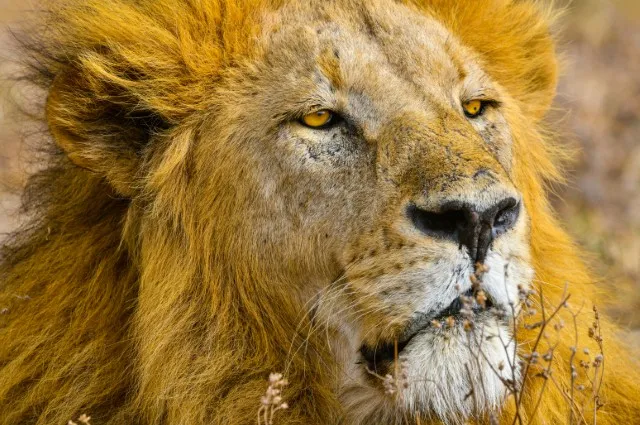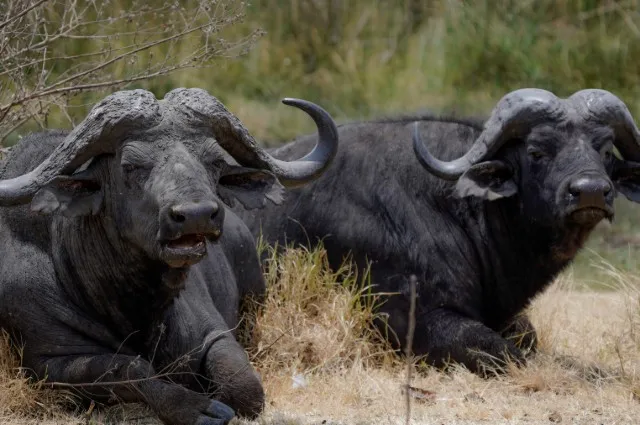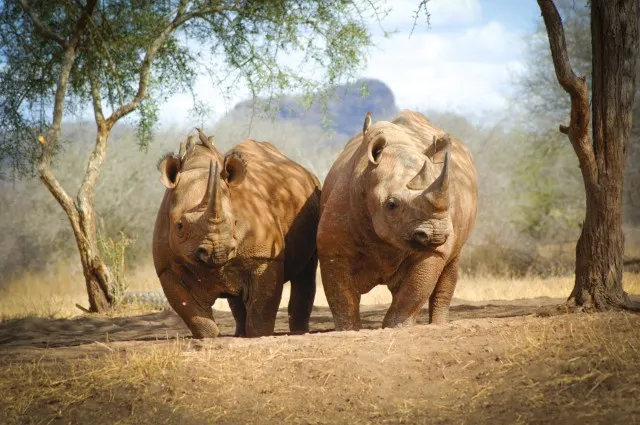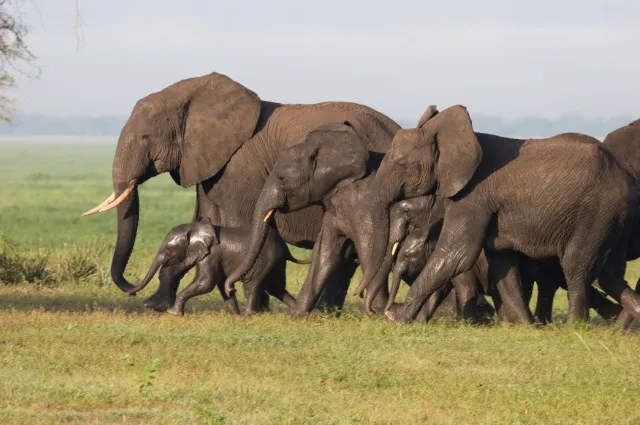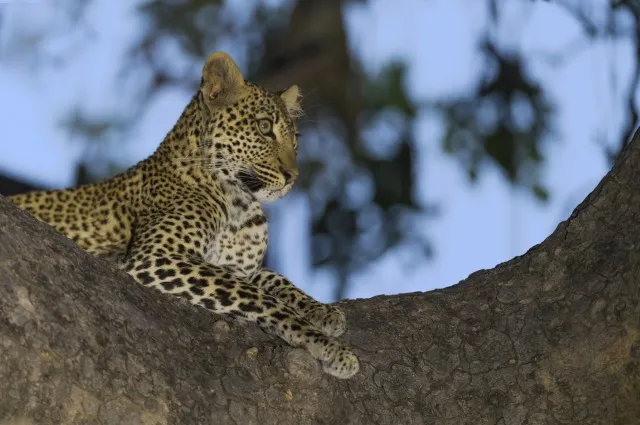Get in touch with our Tanzania specialists Clare & Jo today by email, contact form or by calling +44 (0)1580 712 690
Big Five
The 'Big Five' are Lion, Elephant, Leopard, Rhino and Buffalo. The name was coined by big game hunters who determined that these five animals were the most difficult and the most dangerous to hunt on foot.
Lion
The Lion is synonymous with African safari and according to current estimates there are somewhere between 25,000 and 30,000 roaming the African savannahs and plains.
Lions live in prides of between 5 and 15 with a single female in charge alongside a dominant male. Young males typically leave the pride between 2-3 years of age. Apart from human hunters, lions have no natural enemies.
Elephant
Although elephants are the largest and heaviest land animal, and if provoked they can reach speeds of up to 40 km/h. They live in herds, sometimes up to a 100 strong and are run by a senior female (matriarch). It is the role of the matriarch to 'manage' the herd. As vegetarians, Elephants can eat up to 300kg of grass, bark, branches and foliage every day. Young males leave the herds once they hit their teens, but daughters stay with their mothers.
Buffalo
Interestingly and perhaps unexpectedly, Buffalo are viewed as the most dangerous of the Big Five. They move around in large herds and possess excellent hearing vital to help avoid danger from predators. As they have to drink everyday, the best place to see them is either early morning or early evening at the watering holes.
Rhino
There are two types of Rhino, the Black Rhino is smaller and more elusive than its White relative. It is also one of the most endangered animals in Africa.
Rhino's have to drink everyday, they also need to have easy access to mud as it acts as both a sunscreen and insect repellent. Consequently, Rhino's can often be seen near water. Rhino's have very poor eyesight, but make up for this with a very good sense of smell and excellent hearing.
Leopard
The elusive leopard is a solitary animal that lives and hunts in territory that they guard and protect fiercely.
Leopards are nocturnal animals who stalk their prey under cover of darkness. Because of this, they are renowned as one of the most successful predators in Africa. Once they have killed, to protect it from other predators, Leopards can often be seen dragging their prey up into the trees.
Lion
The Lion is synonymous with African safari and according to current estimates there are somewhere between 25,000 and 30,000 roaming the African savannahs and plains.
Lions live in prides of between 5 and 15 with a single female in charge alongside a dominant male. Young males typically leave the pride between 2-3 years of age. Apart from human hunters, lions have no natural enemies.
Elephant
Although elephants are the largest and heaviest land animal, and if provoked they can reach speeds of up to 40 km/h. They live in herds, sometimes up to a 100 strong and are run by a senior female (matriarch). It is the role of the matriarch to 'manage' the herd. As vegetarians, Elephants can eat up to 300kg of grass, bark, branches and foliage every day. Young males leave the herds once they hit their teens, but daughters stay with their mothers.
Buffalo
Interestingly and perhaps unexpectedly, Buffalo are viewed as the most dangerous of the Big Five. They move around in large herds and possess excellent hearing vital to help avoid danger from predators. As they have to drink everyday, the best place to see them is either early morning or early evening at the watering holes.
Rhino
There are two types of Rhino, the Black Rhino is smaller and more elusive than its White relative. It is also one of the most endangered animals in Africa.
Rhino's have to drink everyday, they also need to have easy access to mud as it acts as both a sunscreen and insect repellent. Consequently, Rhino's can often be seen near water. Rhino's have very poor eyesight, but make up for this with a very good sense of smell and excellent hearing.
Leopard
The elusive leopard is a solitary animal that lives and hunts in territory that they guard and protect fiercely.
Leopards are nocturnal animals who stalk their prey under cover of darkness. Because of this, they are renowned as one of the most successful predators in Africa. Once they have killed, to protect it from other predators, Leopards can often be seen dragging their prey up into the trees.
Big Five
Migration
Rivers and Lakes
Bird Life


